CG Trader

Gas Tungsten arc welding
by CG Trader
Last crawled date: 1 year, 11 months ago
Gas tungsten arc welding (GTAW), also known as tungsten inert gas (TIG) welding, is an arc welding process that uses a non-consumable tungsten electrode to produce the weld. The weld area and electrode are protected from oxidation or other atmospheric contamination by an inert shielding gas (argon or helium). A filler metal is normally used, though some welds, known as autogenous welds, or fusion welds do not require it. When helium is used, this is known as heliarc welding. A constant-current welding power supply produces electrical energy, which is conducted across the arc through a column of highly ionized gas and metal vapors known as a plasma. GTAW is most commonly used to weld thin sections of stainless steel and non-ferrous metals such as aluminum, magnesium, and copper alloys. The process grants the operator greater control over the weld than competing processes such as shielded metal arc welding and gas metal arc welding, allowing for stronger, higher quality welds. However, GTAW is comparatively more complex and difficult to master, and furthermore, it is significantly slower than most other welding techniques. A related process, plasma arc welding, uses a slightly different welding torch to create a more focused welding arc and as a result is often automated.
After the discovery of the short pulsed electric arc in 1801 by Humphry Davy and of the continuous electric arc in 1802 by Vasily Petrov, arc welding developed slowly. C. L. Coffin had the idea of welding in an inert gas atmosphere in 1890, but even in the early 20th century, welding non-ferrous materials such as aluminum and magnesium remained difficult because these metals react rapidly with the air, resulting in porous, dross-filled welds. Processes using flux-covered electrodes did not satisfactorily protect the weld area from contamination. To solve the problem, bottled inert gases were used in the beginning of the 1930s. A few years later, a direct current, gas-shielded welding process emerged in the aircraft industry for welding magnesium.
After the discovery of the short pulsed electric arc in 1801 by Humphry Davy and of the continuous electric arc in 1802 by Vasily Petrov, arc welding developed slowly. C. L. Coffin had the idea of welding in an inert gas atmosphere in 1890, but even in the early 20th century, welding non-ferrous materials such as aluminum and magnesium remained difficult because these metals react rapidly with the air, resulting in porous, dross-filled welds. Processes using flux-covered electrodes did not satisfactorily protect the weld area from contamination. To solve the problem, bottled inert gases were used in the beginning of the 1930s. A few years later, a direct current, gas-shielded welding process emerged in the aircraft industry for welding magnesium.
Similar models
cg_trader
$23

Gas Tungsten arc Welding
...c and as a result is often automated. welding machine manufacturing robot electrical heat fire tool industrial industrial machine
cg_trader
$18

Welding Machine
...cturing tool manufacture forge production anvil warehouse line age blacksmith industrial robot robotic gothic medieval industrial
grabcad
free

Gas nozzle for plasma arc welding
...gas nozzle for plasma arc welding
grabcad
gas nozzle for plasma arc welding
grabcad
free

Argon Gas Tank
..., and other gas-discharge tubes. argon makes a distinctive blue-green gas laser. argon is also used in fluorescent glow starters.
grabcad
free

CNC plasma cutting machine
...ly achieves metal cutting; the temperature and velocity of the plasma is directly proportional to the outlet pressure of the gas.
grabcad
free

Distinct Types Of Welding Procedures
...taw, gas tungsten arc welding with no filler pole and only just melt the two pieces of metal together. https://theweldreport.com/
cg_trader
$350

Platoon welding machine
... instrumentation and other hardware accessories manufacturing industry of various forms of products processing and manufacturing.
grabcad
free

Atmospheric Burner for Smelter
...atmospheric burner for smelter
grabcad
a small atmospheric burner for non ferrous metals smelter
grabcad
free

Aluminium Welding Table
...or welding specialty metals and stainless steel, where ferrous contamination is a factor.
designed to fit popular modular tools.
3dwarehouse
free

Lincoln Electric Mig , Plasma Cutter and Cart
...arc #argon #core #cut #cutter #flux #gas #gasless #iron #metal #mig #mig_welder #plasma #plazma #steel #stick #tig #weld #welding
Tungsten
turbosquid
$1

Tungsten Acid
...quid
royalty free 3d model tungsten acid for download as max on turbosquid: 3d models for games, architecture, videos. (1165347)
turbosquid
$39

Rush MH3 Tungsten Light Beam
... available on turbo squid, the world's leading provider of digital 3d models for visualization, films, television, and games.
3d_export
$20

SquidGame Jewellery
...ideal weight for use in gold or silver or tungsten or steel or titanium or...
3d_export
$18

Cute Earing
...ideal weight for use in gold or silver or tungsten or steel or titanium or...
3d_export
$10

Special Incandescent light bulb 3D Model
...incandescent light bulb 3d model 3dexport light bulb lamp tungsten incandescent electric power transmission energy development engineering special incandescent...
3d_export
$10

Special Incandescent light bulb 3D Model
...incandescent light bulb 3d model 3dexport light bulb lamp tungsten incandescent electric power transmission energy development engineering special incandescent...
3d_export
$55

Lamp 3D Model
...electric incandescent design classic architecture lightbulb luminance appliance appliances tungsten glow shine lighti lamp 3d model rophaaa 22157...
3d_export
$8

Light Bulb 3D Model
...light bulb incandescent lamp lighting globe electric filament halogen tungsten energy electrical electricity luminosity power illuminate lightbulb light bulb...
3d_export
$20

John Lowe Black Titanium Dart 3D Model
...john lowe black titanium dart 3d model 3dexport unicorn tungsten black john lowe titanium dart pin dart board indoor...
3d_export
free

Doll Jewelry
...ideal weight. suitable for use in gold, silver and tungsten steel, titanium, copper, radium and… enjoy...
Arc
archibase_planet
free

Arc
...arc
archibase planet
arc arch
arc - 3d model (*.gsm+*.3ds) for exterior 3d visualization.
archibase_planet
free

Arc
...arc
archibase planet
arc arch
arc n190113 - 3d model (*.gsm+*.3ds) for interior 3d visualization.
archibase_planet
free

Arc
...arc
archibase planet
arc arch
arc 1 - 3d model (*.gsm+*.3ds) for interior 3d visualization.
archibase_planet
free

Arc
...arc
archibase planet
arc arch
arc 2 - 3d model (*.gsm+*.3ds) for interior 3d visualization.
archibase_planet
free

Arc
...arc
archibase planet
arc arch
arc 3 - 3d model (*.gsm+*.3ds) for interior 3d visualization.
archibase_planet
free

Arc
...arc
archibase planet
arc arch
arc n170413 - 3d model (*.gsm+*.3ds) for interior 3d visualization.
archibase_planet
free

Arc
...arc
archibase planet
arc arch
arc n130513 - 3d model (*.gsm+*.3ds) for interior 3d visualization.
archibase_planet
free

Arc
...arc
archibase planet
arc arch
arc n030813 - 3d model (*.gsm+*.3ds+*.max) for 3d visualization.
archibase_planet
free

Arc
...arc
archibase planet
arc arch
arc n290713 - 3d model (*.gsm+*.3ds) for interior 3d visualization.
archibase_planet
free

Arc
...arc
archibase planet
arc arch window
arc 1 - 3d model (*.gsm+*.3ds) for interior 3d visualization.
Welding
3d_export
$8

welding of electric welding machine
...ng. the melted welding wire penetrates into the parts to be welded. after cooling, the objects to be welded are firmly connected.
3d_export
$5

welded anchor
...welded anchor
3dexport
welded anchor
3d_export
$17

welding jig for welding of instrument frame welding beam
...obot, so that the robot does not stop working when the manual parts are put on and taken, and the working efficiency is improved.
3d_export
$12

mbt welding fixture
... be used for welding design reference, welcome to download and learn from friends in need. the model contains stp general format.
turbosquid
$35

Welding Robot
...id
royalty free 3d model welding robot for download as blend on turbosquid: 3d models for games, architecture, videos. (1645667)
turbosquid
$2

Welding Robot
...id
royalty free 3d model welding robot for download as blend on turbosquid: 3d models for games, architecture, videos. (1480421)
turbosquid
$10

Welding Machine
...ree 3d model welding machine for download as ma, obj, and fbx on turbosquid: 3d models for games, architecture, videos. (1176188)
3d_export
$10

Welding apparatus 3D Model
...welding apparatus 3d model
3dexport
welding apparatus burner gas-jet
welding apparatus 3d model gaj15 60372 3dexport
3d_export
$20

ultrasonic welding machine welding of nose bar outside mask
...and discharging. the drawing file is sw2016 version with step neutral format. it has a good reference value. welcome to download.
3d_export
$21

welding fixture for automobile body
...ile welding line. we must design welding line suitable for automobile and strive to improve the design and manufacturing ability.
Gas
archibase_planet
free
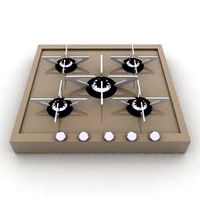
Gas
...gas
archibase planet
kitchen range gas stove cooker
gas - 3d model (*.gsm+*.3ds) for interior 3d visualization.
archibase_planet
free
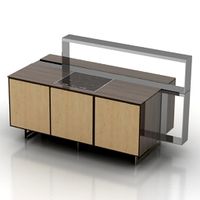
Gas-stove
...e
archibase planet
gas-stove gas cooker kitchen-range gas stove
gas-stove - 3d model (*.gsm+*.3ds) for interior 3d visualization.
archibase_planet
free
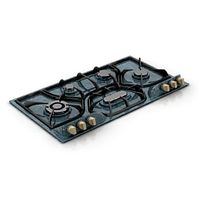
Gas stove
...ase planet
gas stove kitchen-range gas-stove gas cooker
gas stove n280711 - 3d model (*.gsm+*.3ds) for interior 3d visualization.
archibase_planet
free

Gas stove
...e planet
gas stove gas cooker kitchen-range gas-stove
gas stove siemens n230912 - 3d model (*.3ds) for interior 3d visualization.
archibase_planet
free

Gas stove
...ase planet
gas stove kitchen-range gas-stove gas cooker
gas stove n201211 - 3d model (*.gsm+*.3ds) for interior 3d visualization.
archibase_planet
free
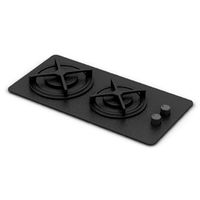
Gas stove
...ase planet
gas stove kitchen-range gas-stove gas cooker
gas stove n210512 - 3d model (*.gsm+*.3ds) for interior 3d visualization.
archibase_planet
free
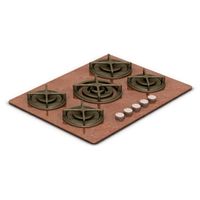
Gas stove
...ase planet
gas stove gas cooker kitchen-range gas-stove
gas stove n170912 - 3d model (*.gsm+*.3ds) for interior 3d visualization.
archibase_planet
free
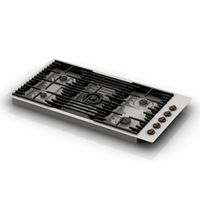
Gas stove
...ase planet
gas stove gas cooker kitchen-range gas-stove
gas stove n310313 - 3d model (*.gsm+*.3ds) for interior 3d visualization.
archibase_planet
free

Gas stove
...ase planet
gas stove gas cooker kitchen-range gas-stove
gas stove n110814 - 3d model (*.gsm+*.3ds) for interior 3d visualization.
archibase_planet
free

Gas stove
...ase planet
gas stove gas cooker kitchen-range gas-stove
gas stove n111014 - 3d model (*.gsm+*.3ds) for interior 3d visualization.
